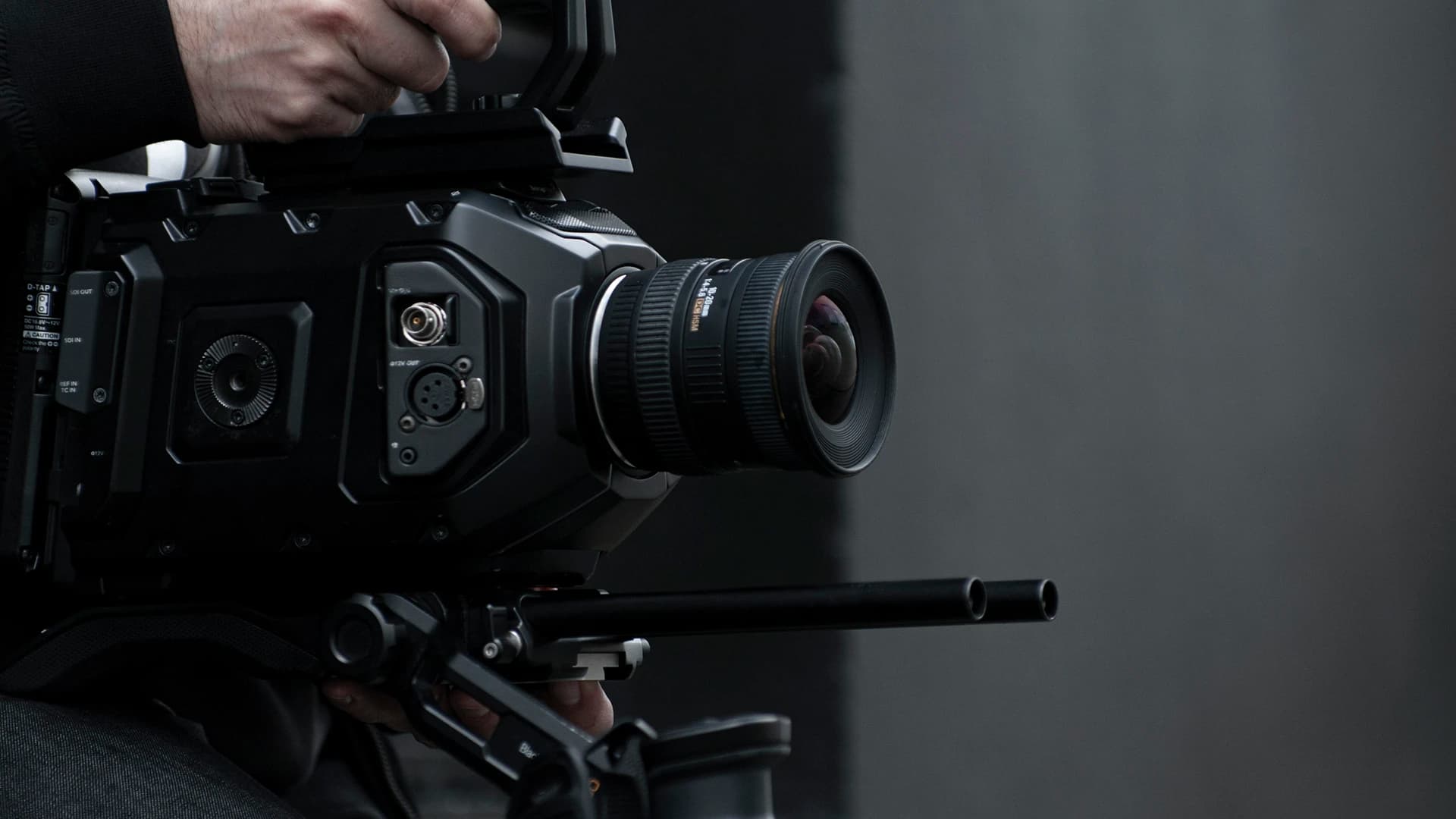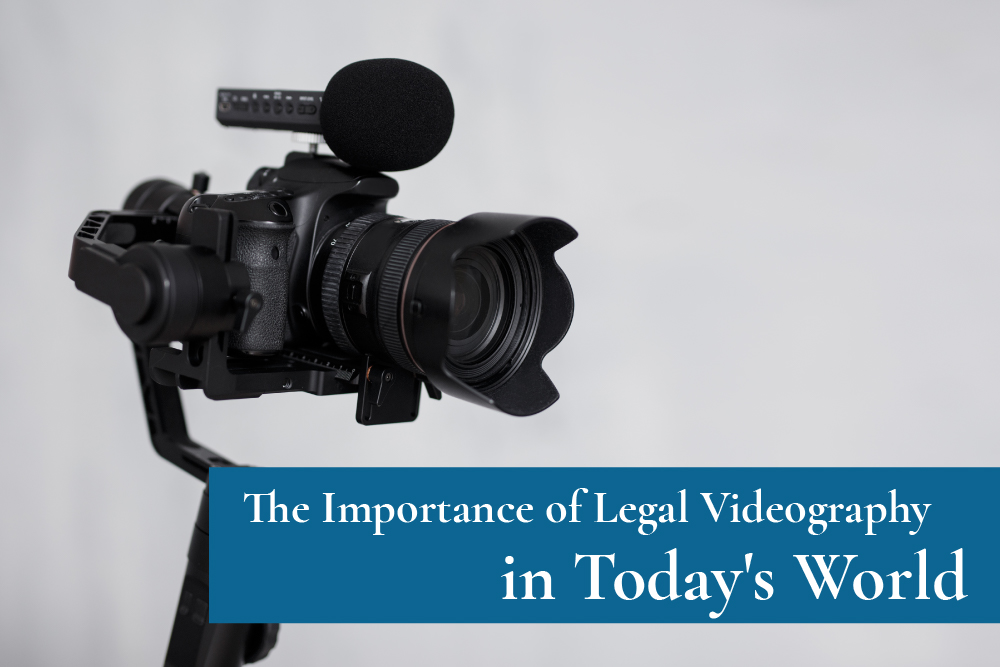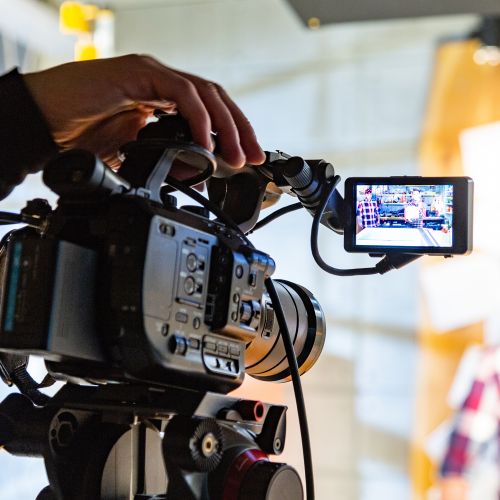The Advantages of Professional Legal Videography in Complex Legal Instances
The Advantages of Professional Legal Videography in Complex Legal Instances
Blog Article
Understanding the Importance of Videography in Legal Process
The integration of videography into lawful proceedings has actually become a substantial factor in the discussion and interpretation of evidence. By catching aesthetic elements such as body movement and face expressions, videography improves the narrative surrounding witness statements and can profoundly affect jury perceptions. As the legal landscape develops, recognizing its ramifications on credibility and clearness comes to be vital for lawyers. What best techniques should be embraced to maximize its efficiency, and how might future advancements reshape this crucial aspect of the judicial process?
Function of Videography forthcoming
Videography plays a progressively crucial duty in legal process, working as an effective medium for providing evidence. The assimilation of video clip recordings right into the lawful framework permits a much more vibrant depiction of facts, allowing judges and jurors to imagine events as they took place. This aesthetic documents can encompass a variety of materials, consisting of surveillance video footage, recorded witness statements, and specialist demonstrations, every one of which can significantly improve the evidentiary landscape.
One of the primary benefits of videography is its capacity to capture nuances that might be lost in composed accounts. Faces, body language, and situational context can provide crucial understandings, aiding to convey emotions and purposes that text alone can not. Moreover, making use of video proof cultivates a more engaging court experience, possibly helping jurors in comprehending intricate cases.
As innovation advancements, the high quality and access of videographic evidence have enhanced, making it an important part of modern lawful practices. Courts significantly identify the value of video clip as a reliable resource of info, motivating lawyers to adapt their techniques for proof discussion. Ultimately, videography serves not just to highlight facts yet also to boost the overall honesty of the judicial process.

Enhancing Reputation and Clearness
A substantial advantage of integrating videography in legal procedures is its capability to improve both trustworthiness and clarity of evidence presented in court. Videographic evidence can catch nuances that composed papers might ignore, such as tone, body language, and context. This graph permits courts and judges to much better understand the circumstances bordering the case, thus promoting a more accurate understanding of the events in question.

Furthermore, the quality paid for by videography minimizes the likelihood of misconception that can occur from textual summaries. This precision is especially crucial in intricate cases, where information can be easily misconstrued. Ultimately, by providing evidence in an aesthetically available layout, videography not only reinforces the honesty of the judicial process yet also supports educated decision-making by those included in legal proceedings.
Effect On Court Assumption
The incorporation of videographic proof significantly influences jury perception, usually leading to more involved and notified considerations. Jurors are normally a lot more responsive to aesthetic info, which can improve their understanding of intricate situations. Videography provides truths in a way that is both obtainable and engaging, enabling jurors to connect with the proof on a much more individual level.
Furthermore, the ability to witness occasions as they took place can stimulate emotional responses that created transcripts or verbal testaments may stop working to elicit. This emotional engagement read the full info here can lead jurors to form more powerful point of views concerning the integrity of witnesses and the general story of the situation. The graph of evidence additionally aids in clearing up obscurities, making it less complicated for jurors to comprehend the context and relevance of the details provided.
Furthermore, videography can act as an effective tool for storytelling, enabling lawyers to construct an influential narrative that resonates with the court. When jurors can picture scenarios and witness essential minutes, their capacity to intentional attentively and get to a well-informed verdict is substantially enhanced, eventually impacting the result of lawful proceedings.
Best Practices for Legal Videography
Carrying out best techniques in legal videography is vital for making certain that visual evidence is both legitimate and reliable in the courtroom. Pick professional specialists who specialize in lawful videography to guarantee the technological high quality of the recordings. This includes utilizing high-resolution video cameras and expert audio tools to catch clear visuals and audio.
2nd, maintain appropriate documentation throughout the recording procedure. This entails producing a thorough log that consists of timestamps, descriptions of the content, and the identifications of all individuals present. Such documentation can strengthen the credibility of the video.

Additionally, think about using ideal modifying techniques. While it is essential to protect the original content, small changes for quality-- such as enhancing audio levels-- can improve the general discussion without changing the material.
Future Trends in Legal Videography
As lawful videography remains to develop, arising modern technologies and methods are forming the future landscape of visual proof in the courtroom (Legal Videography). One significant trend is the integration of high-def and 4K video clip quality, enhancing the quality and detail of videotaped testaments and evidence. This improved resolution aids try these out jurors in adequately examining the reliability of witnesses and the nuances of the provided products
Furthermore, using fabricated intelligence (AI) in video clip analysis is gaining grip. AI devices can aid in recognizing essential moments in footage, creating transcripts, and even analyzing non-verbal communication, which supplies much deeper understandings into witness reputation. Virtual fact (VIRTUAL REALITY) and increased truth (AR) are poised to change how proof is presented, allowing jurors to immerse themselves in criminal activity scenes or circumstances, consequently fostering a much more extensive understanding of the context.
Final Thought
In recap, videography works as an indispensable tool in lawful process, improving the discussion of proof and enhancing the overall understanding of cases. By recording non-verbal hints and reinforcing the trustworthiness of witness accounts, videography considerably affects court assumption and decision-making processes - Legal Videography. Sticking to best methods ensures the effectiveness of lawful videography, while emerging trends promise to more increase their explanation its duty in the judicial system, ultimately fostering a much more informed and engaged legal environment
Videography plays a significantly crucial role in lawful proceedings, serving as a powerful medium for presenting proof.A substantial benefit of including videography in lawful process is its ability to improve both trustworthiness and clearness of evidence presented in court. Ultimately, by presenting evidence in an aesthetically easily accessible style, videography not just reinforces the stability of the judicial procedure yet likewise supports educated decision-making by those involved in lawful process.
In summary, videography serves as an important device in legal process, improving the presentation of proof and enhancing the overall understanding of situations. Legal Videography. Adhering to best techniques ensures the efficiency of legal videography, while arising patterns guarantee to further augment its duty in the judicial system, ultimately cultivating a more enlightened and engaged lawful atmosphere
Report this page